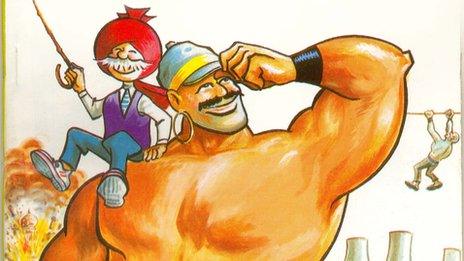Grant Morrison and Rian Hughes: The story behind 'The Key'
- Published
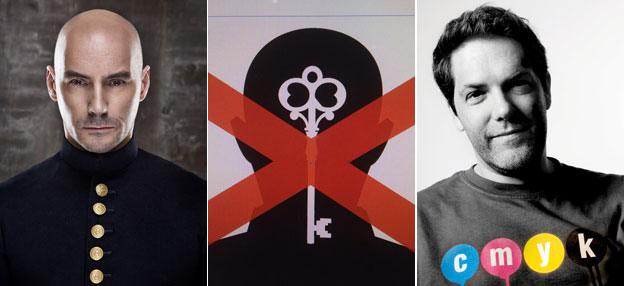
Grant Morrison created "The Key" and Rian Hughes drew the comic
A faceless figure stands at gunpoint on the edge of a pier. A key is ripped from his neck by state soldiers and tossed into the water.
As it sinks to the bottom it joins dozens of other keys half submerged in the seabed - each one different and beautiful.
The Key, a comic strip written by Grant Morrison and drawn by Rian Hughes, was created for the BBC's Freedom 2014 season.
Set in a repressive future society, everything not forbidden is compulsory.
Individuality is defined by a key, and the state - represented by armed soldiers and hovering drones - is intent on replacing each person's unique key with a standard grey one.
"It's a totalitarian state where freedom isn't exactly top of the list", says Morrison, who has written for Batman, Superman, The X-Men and Wonder Woman, among many others.
"We have a rebel who wears a key around his neck. His key represents his own individual expression.
"With the state seeming to execute this character for dissent, many people realise they have keys of their own. It triggers a landslide and people start to act."
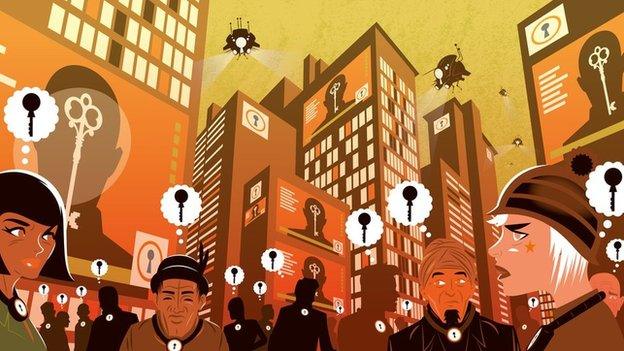
An image of the faceless rebel, marked through with a red cross, is displayed around the city on his apparent death.
It is a woman, staring at the image, who is shocked into reacting.
"She is the person who says this is enough", says Hughes.
"She represents the everywoman, reasserting her individuality."
She screams and pulls off the padlock fitted around her neck.
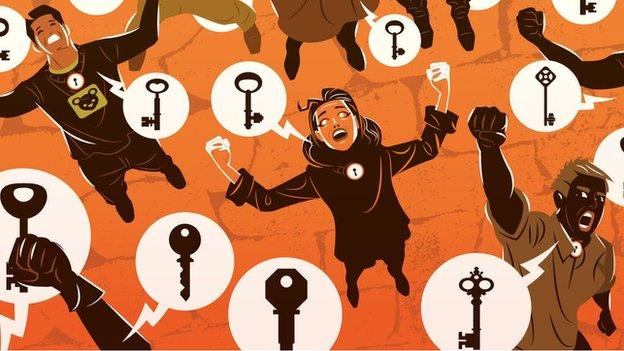
As others join her they attach their locks to a chain fence in a show of solidarity.
Meanwhile the rebel of the story is sinking to the bottom of the sea.
Superhero redesigned
It is a faceless and sexless figure - designed to be the everyman character. A man or a woman that everyone could relate to.
"Instead of the usual superhero mask, he has a utilitarian bag on his head," adds Hughes.
"At first Grant was thinking that The Key could be like a superhero, but he ended up being redesigned."
There are still superhero touches. The bag on his head has two points, reminiscent of Batman's pointy ears.
He is also a canny escape artist. Kicked into the water by a state guard he manages to free himself from his straightjacket, his chains and the thick state padlock around his neck to resurface at the end with a hand full of keys.
"The superhero for me is a symbolic figure. It has to be someone we can relate to, and it allows us to deal with things quite directly," adds Morrison.
"What I love about comics is they way they allow you to talk about big ideas like freedom, meaning, what we're all here for and why."
"There's always somewhere in the world where someone is trying to control others' expression."
It is not the first time that Morrison and Hughes have collaborated.
In 1990 they worked on a controversial Dan Dare comic, which turned the hero into a stooge of Margaret Thatcher's government.
Morrison, who lives near Glasgow, also made headlines when he apparently killed off Batman. He created a storyline where Batman died and Robin grew up and took his place - and actually became a better version of him.
But the Key - which has no words - represents a departure.
"Without words it became much more abstracted and poetic," adds Morrison.
Hughes adds: "The quest for freedom and self-expression is a perennial story, it's always current in one way or another.
There's always somewhere in the world where someone is trying to control others' expression."
Follow @BBCNewsMagazine, external on Twitter and on Facebook, external
- Published22 January 2014
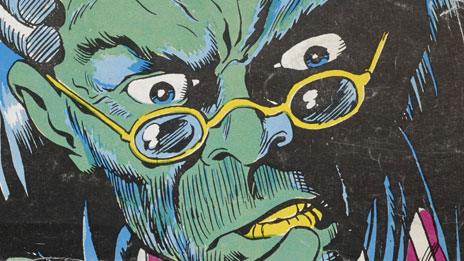
- Published6 August 2012
